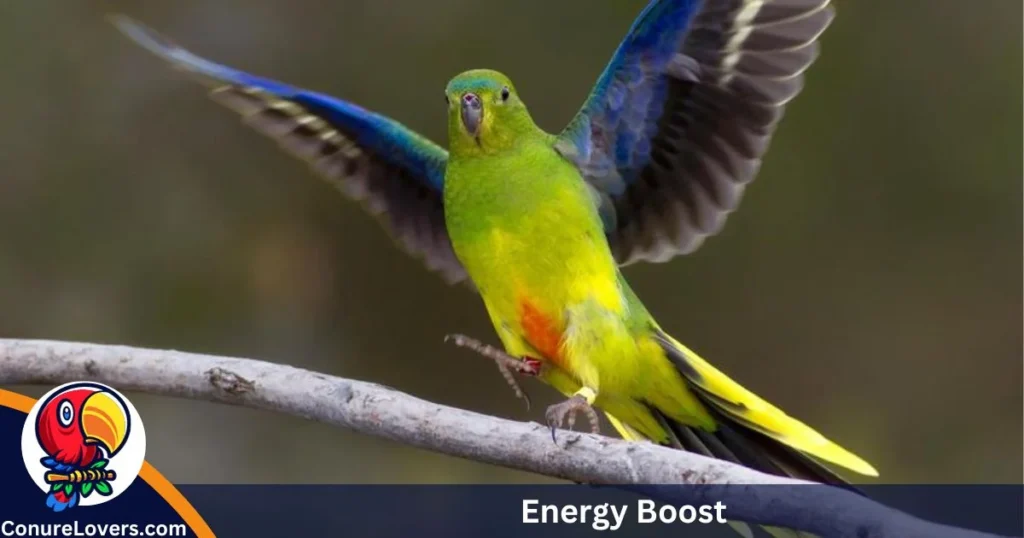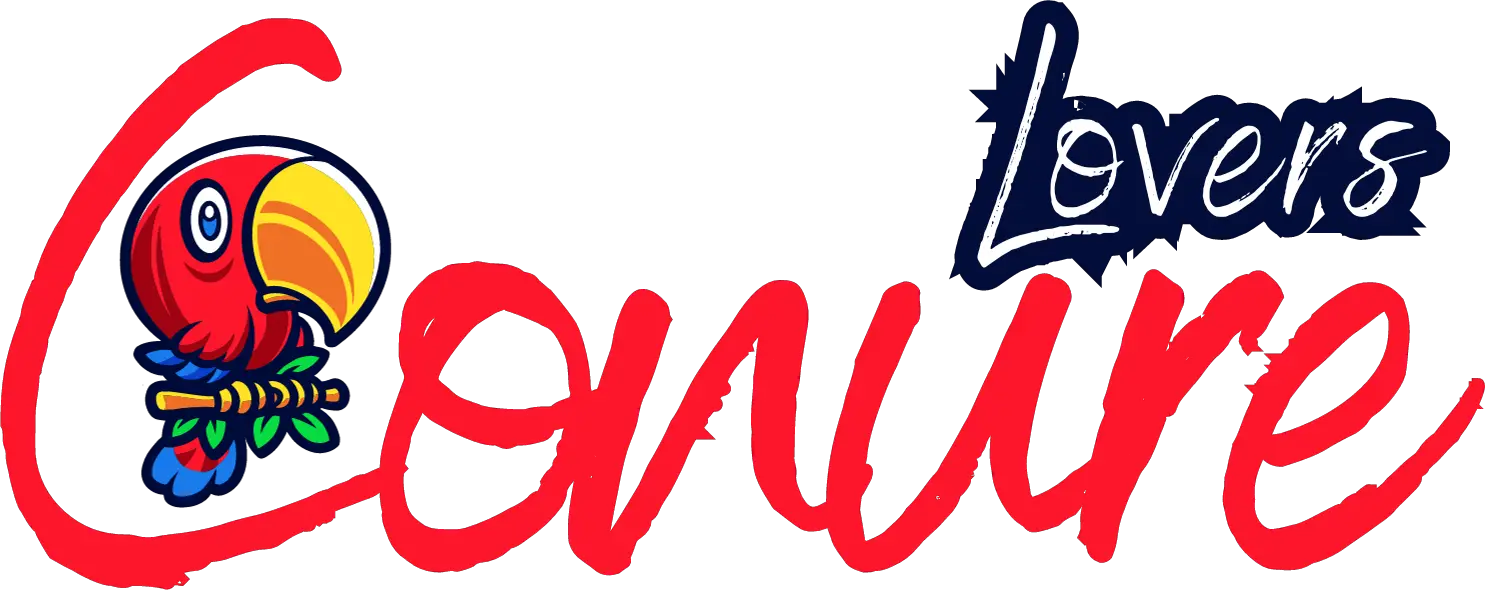Do Parrots Eat Zucchini? Yes, it’s good for them because raw zucchini has more nutrients than cooked ones, just like with other veggies. But, some parrots might not like new veggies at first. So, you can try giving it to them in different ways to see what they prefer.
When it comes to your feathered friend’s diet, experts suggest making pellets the main focus, with about 30-40% reserved for fruits, veggies, and treats. This not only keeps your parrot healthy but also saves you some bucks.
Now, let’s talk about veggies, and today’s star is zucchini. Despite being a fruit in the science world, it’s a fantastic addition to your parrot’s menu. Zucchini is a low-calorie, non-fatty treat loaded with vitamins, minerals, and antioxidants – perfect for your parrot’s well-being. Just remember, always double-check if a bird can munch on a particular veggie before serving it up. Your parrot will thank you for the tasty and nutritious upgrade!
What Are the Benefits of Zucchini?
Zucchini isn’t just safe for your bird; it’s a beneficial and highly nutritious addition to their diet. By adding this to your pet’s menu, you’re giving them a good dose of vitamins K, C, and B6, along with elements like riboflavin, manganese, potassium, and folate – all packed with goodness for your parrot.
Now, let’s dive into the perks:
Immune System Boost:
Vitamin C and antioxidants team up to keep your parrot’s body in top shape. They tackle free radicals and beef up the body’s natural defense against viruses and bacteria. That’s why it’s crucial to include fruits and veggies in their daily meals!
Supporting Eye Health:
While berries might take the lead in supporting eye health, zucchini holds its own with a good amount of Vitamin B, lutein, and manganese. These elements contribute to your bird’s vision stability, and the antioxidants kick in to clear out those pesky free radicals.
Energy Boost:

Zucchini might not be a superhero, but thanks to B6, riboflavin, and folate, your bird gets an extra energy kick. Get ready for some added playtime with your feathered friend after a bowl of zucchini. It’s a win-win for their taste buds and energy levels!
Read Also: Are Conures Good Pets I Yes These are Widely liked.
Blood Circulation and Sugar Levels:
Even though zucchini is technically a fruit, it does the opposite of what you’d expect – it lowers blood sugar levels, all thanks to its high fiber content! This is a big win for parrots dealing with obesity and diabetes. Plus, the low sugar and high fiber combo means your feathered friend stays full for longer!
With high potassium and low sodium, zucchini becomes a superhero in normalizing blood circulation. So, if your parrot’s menu includes sodium-packed treats like cheese or nuts, throw in a couple of zucchini slices for a healthy mix!
Regulating Digestive System:
The abundance of water and fiber in zucchini works wonders for your parrot’s digestive tract! It’s like a digestive miracle!
Antioxidants in zucchini play a vital role in preventing ulcers and colon cancer. And here’s a bonus: while not directly tied to digestion, electrolytes in zucchini also help keep muscles and nerve cells in check.
Zucchini isn’t just a tasty treat; it’s a health boost for your feathered companion!
Should You Prepare Zucchini for a Parrot?

Raw Goodness for Parrots:
I usually prefer serving fruits and veggies to my parrots in their natural, raw state! Zucchini is a great example—it’s firm yet soft enough for your parrot to handle without any cooking. Plus, going raw helps keep more nutrients intact!
Now, here’s the deal: zucchini is about 90 percent water, and when you cook it, some of those nutrients tag along. For instance, about a third of the phosphorus content and almost half of the potassium take a rain check. Vitamin C takes a hit too, losing well over 50 percent, and magnesium also sees a dip. So, while cooking doesn’t zap away all the goodness, a good chunk is left in the pot. The only thing that goes up is the vitamin A content. Personally, I’m not a fan of sacrificing several nutrients for the sake of one. You can snag vitamin A from other sources, like those cherries I mentioned earlier!
Cooking Considerations:
If your bird isn’t a fan of raw zucchini, then consider giving steaming or pureeing a shot. Some birds prefer that consistency. Just make sure to cool the puree before presenting it to your bird.
Variety is the Spice of Life:
I’ve noticed that offering foods in different forms can be a game-changer, especially for products that a parrot snubs in its natural state. Different birds have different tastes, after all!
Small Tip for Serving:
When going raw with zucchini, many parrots seem to prefer it chopped into smaller triangles! And guess what? No need to peel or remove the seeds—everything is edible, especially when the fruit is still young and soft. Keep those feathered friends munching happily!
Are Zucchini Leaves or Flowers Safe for My Parrot?
Feeding Zucchini to Your Parrot: A Raw Delight!
When it comes to my parrots, I prefer keeping things fresh and raw, especially with fruits and veggies! While I might blanch tougher veggies like pumpkin, zucchini is a champ – firm yet soft enough for my feathered friends to handle raw. And guess what? Keeping it raw preserves more of those essential nutrients!
Why Raw is the Way to Go:
Zucchini is about 90 percent water, and when you cook it, some nutrients take a dip. For instance, one-third of the phosphorus content and almost half of the potassium bid farewell! Vitamin C? It takes a hit – losing over 50 percent. Even magnesium takes a hit. Cooking doesn’t wash out everything, but it does say goodbye to a chunk of nutrients. Personally, I’m not a fan of losing several nutrients for the sake of one. You can get vitamin A from other goodies, like cherries!
When to Consider Cooking:
Only if your bird snubs raw zucchini, consider a different approach – maybe steam it and make a puree. Some birds dig that texture. But hey, make sure to cool that puree before presenting it to your bird.
Mixing It Up:
Different birds, different tastes! Offering foods in various forms can help if your parrot is being a bit picky. Also, a quick tip: when serving raw zucchini, many parrots go for it when it’s chopped into smaller triangles. No need to peel or deseed – everything’s edible, especially when the fruit is young and soft!
Bonus: Leaves and Flowers Adventure:
Now, I haven’t spotted zucchinis with leaves or flowers at my local spots, but if you grow them or find them that way, go for it! Feed both the fruit and the extras. It’s a fantastic way to shake up your pet’s menu. Keep in mind, though, that the older the plant, the bitterer the leaves. A little steam can mellow out the bitterness and even bring out some sweet notes. And remember, anything close to the ground needs an extra thorough wash!
Is Zucchini Skin Safe for Parrots?

Edible Goodness – No Need to Peel (Unless It’s Feeling Old!)
Just a reminder: when it comes to zucchini, everything in the fruit is fair game. The only time you might want to peel the skin is if it’s looking a bit old and weary – age can bring on a hint of bitterness.
Now, if you snag zucchinis from big supermarkets, they might come dressed in a light waxy film. Be prepared for a bit of extra scrubbing under the water. You could give “fruit washing liquids” a shot if it’s super shiny, but maybe skip it on your next grocery run. Instead, take a trip to the farmer’s market – it’s a win-win for both you and your parrot. Fresh, untainted zucchinis await, minus the extra effort of dealing with that waxy coating. Happy munching, both for you and your feathered friend!
Does Zucchini Contain Pesticides?
Ensuring Your Parrot’s Safety: A Farmer’s Insight
When it comes to the safety of your parrot’s veggies and fruits, only the farmers in the know can spill the beans. Unfortunately, even the best intentions can’t shield us from the not-so-honest practices of a few manufacturers.
Minimizing the Risks: Tips to Remember
1. Stick to reputable vendors and farmers you personally know. Trust is key when it comes to your feathered friend’s food.
2. If the source raises an eyebrow, go all out on cleaning. And by all out, I mean really, really well. A proper wash, even with just water, can wave goodbye to about 70% of pesticides clinging to the skin.
Keep these tips in mind, and you’ll be on the right track to providing your parrot with a safe and scrumptious feast!
What Foods to Serve with Zucchini?
Zucchini: A Versatile Addition to Your Parrot’s Plate!
Even though zucchini technically falls into the fruit category, in my kitchen, it plays well with vegetables, especially in a salad. But hey, your parrot might have its own ideas about this fruity debate!
Balancing Sweetness:
If your parrot’s feasting on lots of sweet fruits, think of zucchini as a friendly sidekick. Its neutral taste and high water content make it an excellent palate cleanser between fruity bites. Those fibers also step in to tone down the sugar’s impact – a win-win!
Vitamin A Boost:
While zucchini isn’t a powerhouse of vitamin A, it brings a truckload of other nutrients to the table. To amp up the vitamin A game, toss in a bit of carrot. Just keep the carrot amount slightly less than the zucchini to strike that nutrient balance.
Your parrot’s taste buds are in for a treat with this flavorful and nutrient-packed combo!
Conclusion
In short, zucchini is a fantastic and nutritious addition to your parrot’s diet, offering vitamins, minerals, and antioxidants. Whether served raw or cooked, it brings numerous benefits, from boosting the immune system to supporting eye health and providing an energy kick.
Considering your parrot’s preferences and health needs, you can get creative with different forms and pairings, like adding a bit of carrot for a vitamin A boost. Just be mindful of cleaning and sourcing to ensure a safe and delicious feast for your feathered friend!

It’s Ethan Richards, your Feathered Pal Expert from “Conure Lovers.” Let’s embark on a delightful adventure of conure companionship. I’ll share practical tips to ensure your feathered buddy lives a happy and healthy life.












